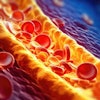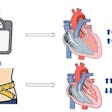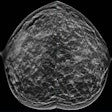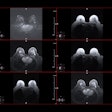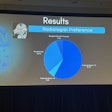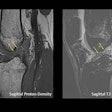PET in Infection Imaging: ***Under Development***
General:
FDG PET appears to be very good for the evaluation of suspected infection of the musculoskeletal system. The physiologic basis of FDG PET in the identification of infection is likely related to the respiratory burst that neutrophils and monocytes experience when exposed to proinflammatory cytokines (e.g., granulocytemacrophage colony stimulating factor, interleukin-8, and interleukin-6), with the resulting metabolization of large amounts of glucose (ie: inflammatory cells at sites of infection show increased glycolytic activity) [1,2].
Metallic implants:
About 400,000 hip and knee arthoplasties are performed annually in the United States [7]. Infection after primary implantation occurs in approximately 1% of hip arthroplasties and 2% of knee arthroplasties [7]. The rate of infection following revision surgery is higher- about 3% for hip and 5% for knee replacements [7]. Approximately one-third of infections develop within 3 months of surgery, another third within 1 year, and the remainder more than 1 year after surgery [7]. FDG PET imaging has been used to evaluate for infected orthopedic prostheses and can assess for the presence of both acute and chronic infectious processes [1]. Initially, FDG PET imaging had shown great utility for the evaluation of patients with suspected orthopedic prosthesis infections [1]. Sensitivities of up to 100%, specificities of 88-93%, and accuracies of 97% had been reported with low interobserver variability [1]. Recently, lower sensitivities for infected hip prosthesis have been reported (as low as 22%)- with an overall accuracy of only 69% [6]. Lower specificities have also been reported (between 9% to 44% depending on the criteria used to define infection) [7]. This is because aseptic loosening and synovitis can also produce a positive PET exam [6,7]. In aseptic loosening, a foreign body granulomatous reaction to polyethylene particles shed by the prosthesis results in macrophage activation that can produce increased FDG accumulation [6].
Advantages of FDG PET imaging over conventional imaging include: 1- FDG accumulates within the site of infection within 60 minutes which provides for rapid patient evaluation; 2- PET imaging has a much higher spatial resolution compared to single photon techniques which allows better distinction between soft-tissue and osseous infection; and 3- FDG PET imaging is less expensive than leukocyte-based labeling techniques [1].
Unfortunately, regardless of how the images are interpreted, FDG PET imaging is less accurate than 111In-labeled leukocyte/ 99mTc-sulfur colloid marrow imaging [7].
Scans performed earlier than 6 weeks following surgery may be falsely positive [1]. Other causes of false positive exams are sterile inflammation associated with prosthetic loosening and patient motion between emission and transmission scans [1]. FDG uptake around the head and neck of hip prosthesis can be seen commonly in non-infected prostheses [3], whereas increased tracer uptake along the interface between the bone and the prosthesis is suggestive of infection [4].
Spinal infection:
FDG PET imaging has proven to be very useful for the detection of disc space infection. Reported sensitivities of up to 100%, and specificities of up to 100% have been reported [2]. In general, increased FDG uptake is not seen in degenerative endplate abnormalities [2].
REFERENCES:
(1) Radiology 2003; Schiesser M, et al. Detection of metallic implant-associated infections with FDG PET in patients with trauma: correlation with microbiology results. 226: 391-398
(2) AJR2002; Stumpe KDM, et al. FDG positron emission tomography for differentiation of degenerative and infectious endplate abnormalities in the lumbar spine detected on MR imaging. 179: 1151-1157
(3) Eur J Nucl Med Mol Imaging 2002; Zhuang H, et al. Persistent non-specific FDG uptake on PET imaging following hip arthroplasty. 29:1328-33
(4) Nucl Med Commun 2002; Chacko TK, et al. The importance of the location of fluorodeoxyglucose uptake in periprosthetic infection in painful hip prostheses. 23:851-5
(5) J Nucl Med 2003; Palestro CJ. Nuclear medicine, the painful prosthetic joint, and orthopedic infection. 44: 927-929
(6) Radiology 2004; Stumpe KD, et al. FDG PET for differentiation of infection and aseptic loosening in total hip replacements: comparison with conventional radiography and three-phase bone scintigraphy. 231: 333-341
(7) J Nucl Med 2004; Love C, et al. Diagnosing infection in the failed joint
replacement: a comparison of coincidence detection 18F- FDG and
111In-labeled leukocyte/ 99mTc-sulfur colloid marrow imaging.
45: 1864-1871
